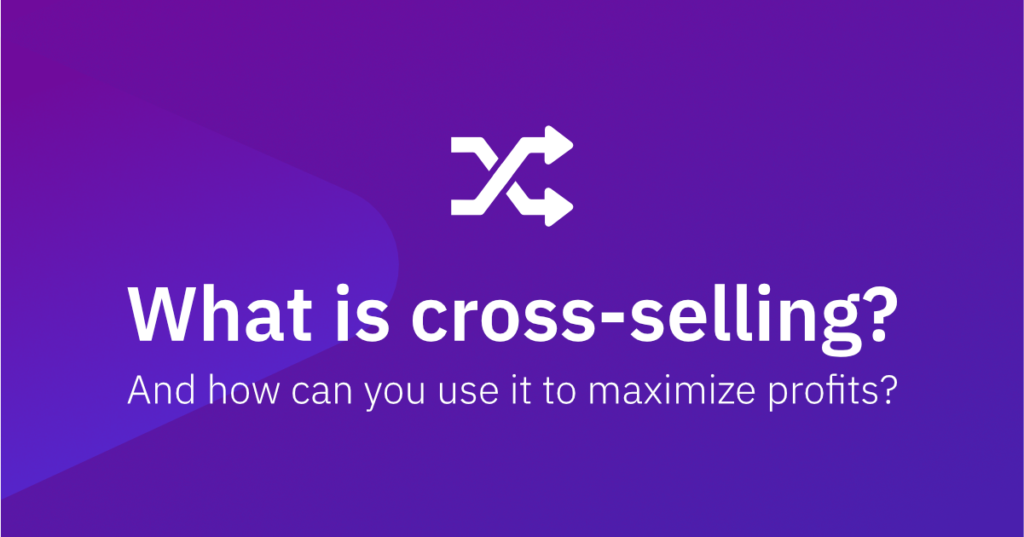What is cross-selling, and how can you use it to maximize profits?
- 18 January 2022

Online store owners have a lot of tools and means to encourage customers to buy more products. One of such techniques is cross-selling. What do you need to know about it? And how can you use cross-selling in your store? Let’s find out.
Cross-selling is one of the most straightforward techniques enabling you to increase average order value (AOV). We mentioned a few of them in the linked article. Today, though, we want to focus strictly on cross-selling.
What is cross-selling?
Shortly put, cross-selling is all about encouraging customers to buy complementary products that supplement ones that the given customer has already put in their cart. Let’s use four quick examples to show you what complementary products are all about. We will compile one main product (so-called KVI, we will explain this acronym in a few moments) with several complementary/additional products (so-called add-ons):
- Motorcycle: helmet, jacket, protectors, cover
- Laptop: mouse, card reader, screen cleaning spray
- Leather shoes: shoe polish, brush, anti-moisture agent
- Skis: helmet, ski poles, bindings, shoes
There are some products that can be used fully/safely only when combined with other products. Cross-selling simply uses this known fact. Make sure your customers get a list of additional products they can (or even should) buy along with their order. This will help you maximize profits.
However, does it mean that the main product has to be expensive? Or that cross-selling is a one-way street (cheap add-ons to an expensive KVI)? Not necessarily. It all depends on your products and creativity. If you manage to sell a costly wooden desk to someone who has been looking for a desk lamp – it’s still pure cross-selling.
Now, let’s see how cross-selling works in the e-commerce world. We’ve selected two examples from sporting goods and electronics:
2 EXAMPLES OF CROSS-SELLING IN E-COMMERCE
The first example is the Decathlon chain. They use cross-selling in their product tabs. What’s important is they put this “similar products” section very high in the product tab, above technical specification, right after product pictures.

And here’s the second example: Bestbuy.com. They go one step further and create a ready-made set of products that you can purchase at once. So, if you’re looking for a laptop, they will offer you a set comprising the MS Office suite, mouse, and additional keyboard. What’s more, every product is on sale:

Cross-selling: KVIs and add-ons
When it comes to cross-selling, it’s extremely important to distinguish between the main product (the one that can be supplemented with complementary products or accessories) and additional products. The first group is frequently referred to as traffic generators or KVIs – key value items. KVIs are very popular products. People look for them and put them in their carts first. In cross-selling, you use them to promote additional products, referred to as add-ons.
As Maciej Wilczynski, CEO of Valueships, commented in an interview for Dealavo:
Prices of “hot” products, key value items, cannot be too high in comparison with the competition. They are popular and often searched for and that makes them extremely easy to compare. The price should be tempting enough to attract the customers to the website of the shop. (…)
Products that cannot be compared are “long-tail goods”, things that are often bought as accessories (add-ons). Examples include TV cables or bags bought with cameras etc. The prices of these products are rarely compared by the customers – if they buy a TV set for a few thousand euros, they usually do not check if they can buy a cable for 5 euros less. Amazon frequently promotes such goods in the “Customers also bought…” section.
People buy add-ons for three significant reasons:
- To use the main product in the better/safer way,
- Achieve the free-delivery threshold
- To save time and buy several products in one order
Indicating KVIs and add-ons is extremely important as it directly affects your offer and pricing policy. You see, customers frequently look up KVIs in Google and price comparison websites. People look for the best deals and attractive prices. That’s why it’s vital to offer these traffic generators at attractive prices, even at the cost of a part of your profit margin. This way, you will attract many customers to buy at your store. And then, by using cross-selling, you can make up for that “lost margin” with add-ons. That’s because when it comes to them, comparing prices is not so popular.
This raises the question – how can you plan the prices of KVIs and add-ons in your store? By using our competitor price monitoring tool. Our tool will provide you with information at what prices your competitors sell products that you offer. Based on that, you will be able to set the optimal price that will attract more customers. The next step is to implement cross-selling to maximize profits.